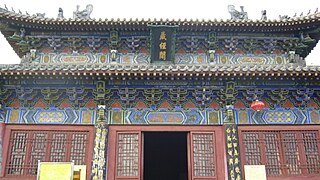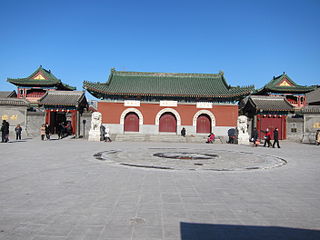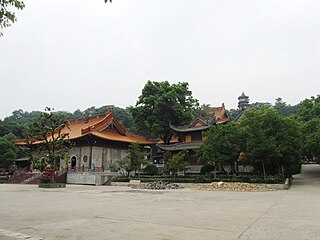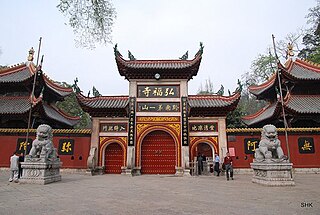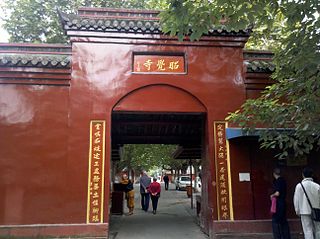| Qianming Temple | |
|---|---|
黔明寺 | |
| Religion | |
| Affiliation | Buddhism |
| Deity | Chan Buddhism |
| Location | |
| Location | Nanming District, Guizhou, Guiyang |
| Country | China |
| Geographic coordinates | 26°34′50″N106°43′32″E / 26.580532°N 106.725445°E Coordinates: 26°34′50″N106°43′32″E / 26.580532°N 106.725445°E |
| Architecture | |
| Architectural style | Chinese architecture |
| Date established | 17th century |
| Completed | 1771 (reconstruction) |
Qianming Temple (Chinese :黔明寺; pinyin :Qiánmíng Sì) is a Buddhist temple located in Nanming District of Guizhou, Guiyang, China. [1]

Chinese is a group of related, but in many cases not mutually intelligible, language varieties, forming the Sinitic branch of the Sino-Tibetan language family. Chinese is spoken by the ethnic Chinese majority and many minority ethnic groups in China. About 1.2 billion people speak some form of Chinese as their first language.
Hanyu Pinyin, often abbreviated to pinyin, is the official romanization system for Standard Chinese in mainland China and to some extent in Taiwan. It is often used to teach Standard Mandarin Chinese, which is normally written using Chinese characters. The system includes four diacritics denoting tones. Pinyin without tone marks is used to spell Chinese names and words in languages written with the Latin alphabet, and also in certain computer input methods to enter Chinese characters.

A Buddhist temple is the place of worship for Buddhists, the followers of Buddhism. They include the structures called vihara, chaitya stupa, wat and pagoda in different regions and languages. Temples in Buddhism represent the pure land or pure environment of a Buddha. Traditional Buddhist temples are designed to inspire inner and outer peace. Its structure and architecture varies from region to region. Usually, the temple consists not only of its buildings, but also the surrounding environment. The Buddhist temples are designed to symbolize 5 elements: Fire, Air, Earth, Water, and Wisdom.





